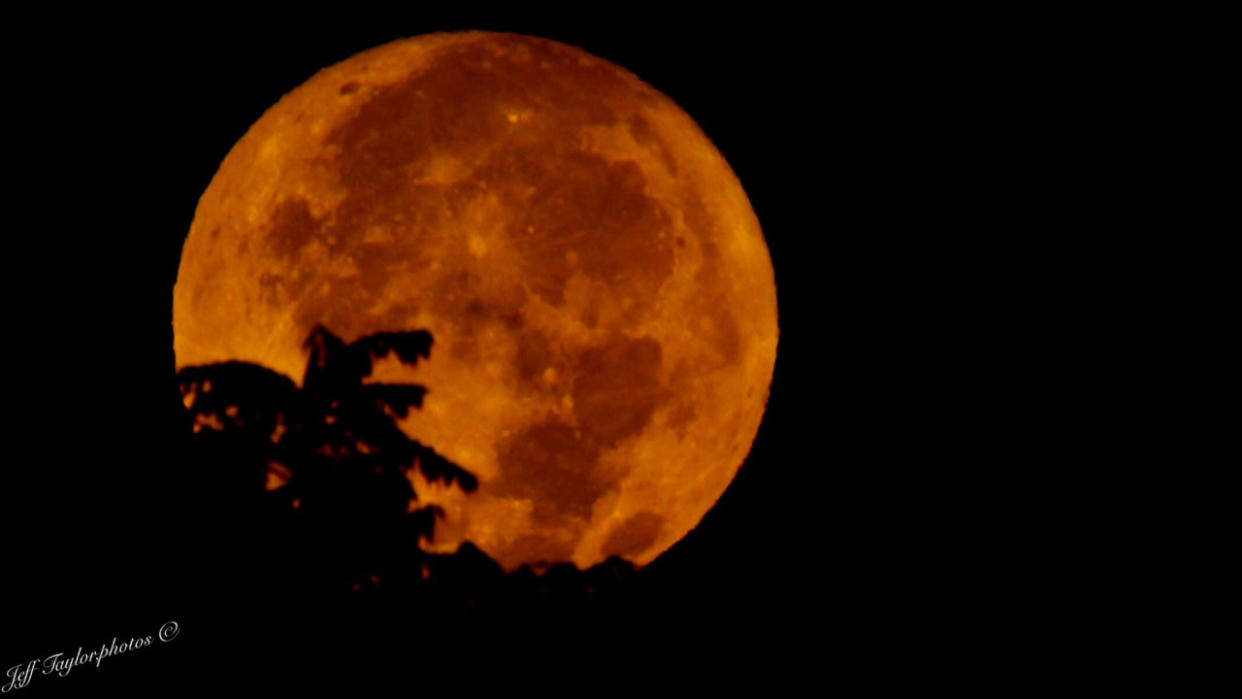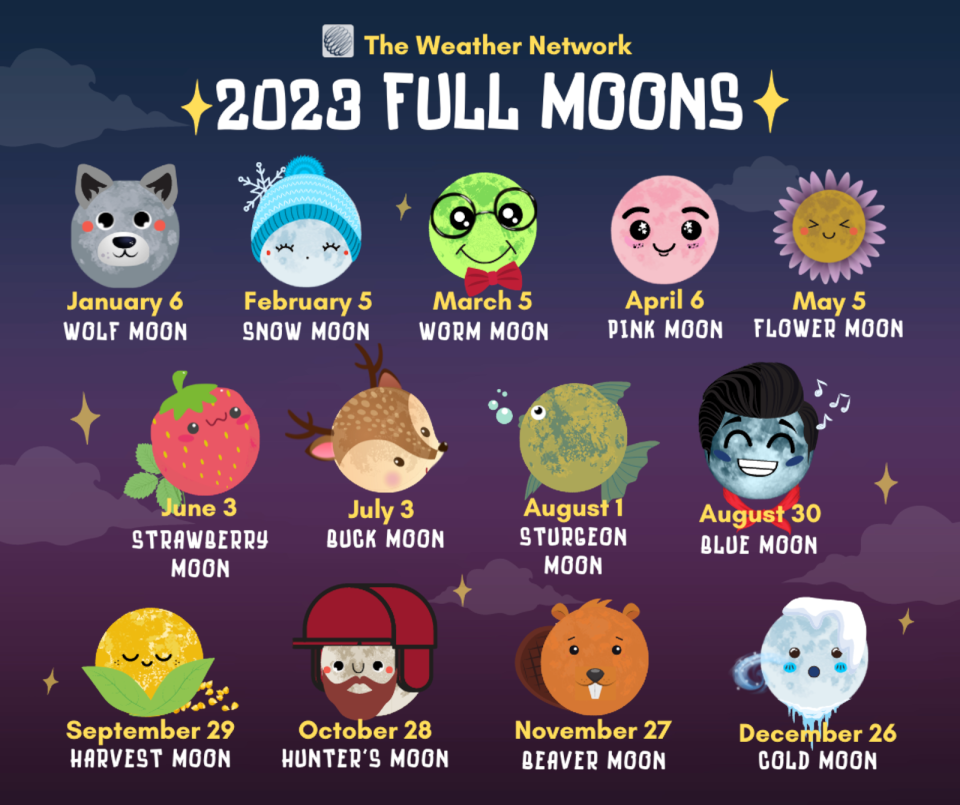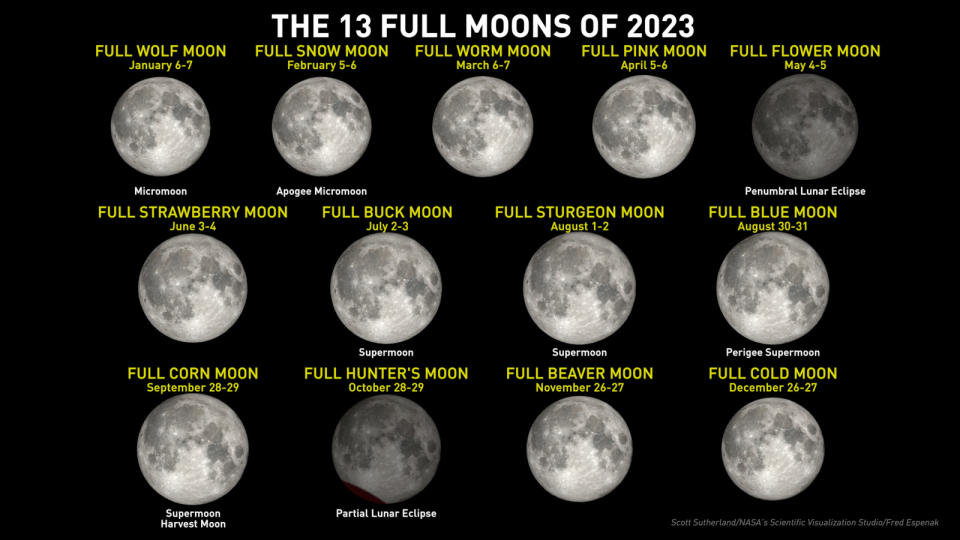Eyes to the sky tonight for the Super Harvest Moon

If you have clear skies on Thursday night or early Friday morning, look up to catch this year's Harvest Moon.
The Full Corn Moon will light up the sky on Thursday night, and if it appears bigger and brighter than your typical September Full Moon, it's not entirely your imagination. While this is the first Full Moon of the fall season, as well as this year's Harvest Moon, it is also the last of four supermoons for 2023.
What is a Corn Moon?
According to the various Farmer's Almanacs in print, each Full Moon of the year has one or more names associated with it. These names were mostly taken from the lunar calendars of First Nations peoples living in the U.S. Northeast. Some were also sourced from Colonial and European folklore.
The Old Farmer's Almanac says that the September Full Moon is usually called the Corn Moon.
"This time of year — late summer into early fall — corresponds with the time of harvesting corn in much of the northern United States," the almanac says. "For this reason, a number of Native American peoples traditionally used some variation of the name 'Corn Moon' to refer to the Moon of either August or September."
Other names for this Full Moon include the Autumn Moon, Drying Grass Moon, Falling Leaves Moon, Yellow Leaf Moon, and even Ice Moon, depending on whose calendar you follow or which mythology you observe.

Other cultures assign names to Full Moons as well.
In Japan, Friday, September 29 is Tsukimi (which translates as "moon-viewing"), a festival to honour the autumn Moon and show gratitude for the harvest. In China, they will be celebrating Zhong Qiu Jie, the mid-autumn festival. Meanwhile, Koreans have a similar holiday, this year from September 28-30, known as Chuseok.
According to the Hindu calendar, this Full Moon is the beginning of Pitru Paksha, a time of the year to honour one's ancestors.
NASA has names for this Full Moon, as well. They call it the GRAIL Moon and the LADEE Moon, after two lunar satellite missions that launched in September — Gravity Recovery and Interior Laboratory (GRAIL) in 2011 and Lunar Atmosphere and Dust Environment Explorer (LADEEE) in 2013.
DON'T MISS: Why does the Moon look so big? What is the mysterious Moon Illusion?
What is the Harvest Moon?
There's another name for this week's Full Moon. It's this year's Harvest Moon.
The Harvest Moon is the Full Moon that occurs closest to the Autumnal Equinox.

The three Full Moons of this year's fall season. The first of them is a supermoon, as it occurs shortly after the Moon's closest approach to Earth for this month, and it is also the Harvest Moon for 2023. Credit: Scott Sutherland/NASA GSVS/Fred Espenak
Sometimes the Harvest Moon is in October, like in in 2020, when it fell on October 1 and was followed by the October 31 Halloween Hunter's Blue Micro Moon.
Most often, though, the Harvest Moon is in September. Last year, in 2022, the Full Moons on either side of the September 23 Equinox occurred on Sep. 10 (13 days away) and Oct. 9 (16 days away). Thus, the September 10 Full Moon was the Harvest Moon.
This year, in 2023, it's not even a close call. The equinox was on September 23, and the Full Moon rises less than a week later, on the morning of the 29th.

The Harvest Moon of 2017 sets from Toronto. Credit: Jeff Taylor/UGC
According to NASA, "The first known written use of this name in the English language (per the Oxford English Dictionary) was in 1706. On average moonrise is about 50 minutes later each night. Around the Harvest Moon, this time is shorter, about 25 minutes for the latitude of Washington, D.C., and only 10 to 20 minutes farther north in Canada and Europe. During the fall harvest season farmers sometimes need to work late into the night by moonlight (especially before the introduction of artificial lights)."
READ MORE: Why is the supermoon so compelling to us?
And what is a supermoon?
Every year, there are anywhere from two to five Full Moons that occur throughout the year that are referred to as 'supermoons'.
Simply put, these are Full Moons that appear larger and brighter in the sky, due to the Moon being closer to Earth.
As the Moon travels around our planet, it traces out an oval-shaped path. So, for roughly half the month the Moon is slightly closer to Earth, and at one point it reaches its closest point to the planet (known as perigee). The rest of the time it is slightly farther away, and it will reach one point where it is farthest away (apogee).
When the Moon is closer to us, it appears bigger and brighter, and when it is farther away it appears smaller and dimmer. When the Moon is near perigee, it appears the biggest and brightest of all, and this is particularly noticeable during the Full Moon.
For this reason, those Full Moons that happen really close to when the Moon is at perigee are known as supermoons.

The thirteen Full Moons of 2023, along with any special details such as 'supermoon', 'harvest moon' or lunar eclipses. Credit: Scott Sutherland/NASA GSVS/Fred Espenak
In 2023, we've already seen three supermoons — the July 2-3 Super Buck Moon, the August 1-2 Super Sturgeon Moon, and the August 30-31 Super Blue Moon.
The September 28-29 Corn Moon is the fourth and last of them for the year.
(Thumbnail image courtesy Jeff Taylor, who uploaded this image of the 2017 Harvest Moon into the Weather Network's UGC Gallery)

